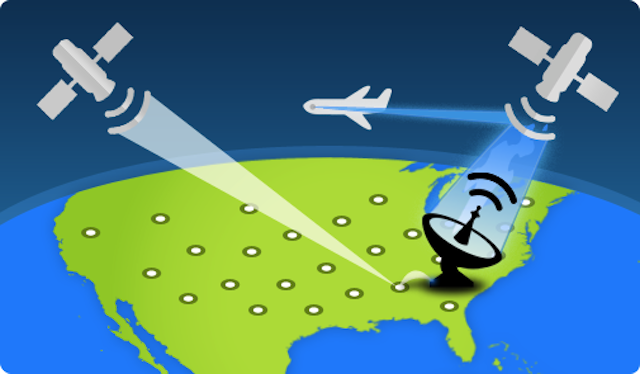Satellite technology soon to help planes land in Seattle
As plane delays and airport congestion run rampant, sitting on the runway for lengthy periods of time or circling above the airport awaiting the O.K. to land have become standard air travel procedures.
But the technology to eliminate such congestion is already available and starting in June, Alaska Airlines will begin testing it at Seattle-Tacoma International Airport. By using landing approaches that incorporate satellite technology, airlines could save fuel and reduce delays—leading to savings of at least $65.6 million annually.
The airline hopes to try out Required Navigation Performance (R.N.P.), a landing technique that uses satellite technology to craft more direct routes to the runway, at more big, busy airports like Seattle-Tacoma. With R.N.P., pilots wouldn’t need to push and pull at the throttles, in essence stepping on the gas and then coasting, to stay on a course designated by air traffic controllers. Descending would be like going down a slide, as the plane would slowly coast to the ground.
Tools like R.N.P. would act like GPS systems for planes, allowing both pilots and air traffic controllers to pinpoint a jet’s exact location. Unlike the current radar-based system, location updates would be immediate. Planes could fly closer together without worry of a collision, which would enable airports to send more planes into the air more often.
But implementing the “NextGen” system of satellite technology on a large scale will require a costly overhaul of the industry’s current radar system. Although Congress included $1 billion a year for the program in the Federal Aviation Administration’s budget, NextGen has already encountered problems.
The New York Times reports:
A government audit found in February that half of the 30 critical contracts needed to build the new system were delayed, and more than a third were over budget.
And the airlines complain that the F.A.A. has been slow to create new landing procedures that make the most use of satellite guidance. It takes five to 10 years to create these procedures because of lengthy environmental and noise impact studies, and the difficulty of coordinating flights in busy airspaces. The F.A.A. is now trying to speed up that process to three years.
To further complicate the issue, airlines and federal regulators have been at odds over who will foot the bill for the new system. Installing a single plane with GPS could cost more than $340,000—a sum that neither group seems eager to pay.
While the system has undoubtedly been slow to take hold, the experiment in Seattle could be a sign of good things to come.

But the technology to eliminate such congestion is already available and starting in June, Alaska Airlines will begin testing it at Seattle-Tacoma International Airport. By using landing approaches that incorporate satellite technology, airlines could save fuel and reduce delays—leading to savings of at least $65.6 million annually.
The airline hopes to try out Required Navigation Performance (R.N.P.), a landing technique that uses satellite technology to craft more direct routes to the runway, at more big, busy airports like Seattle-Tacoma. With R.N.P., pilots wouldn’t need to push and pull at the throttles, in essence stepping on the gas and then coasting, to stay on a course designated by air traffic controllers. Descending would be like going down a slide, as the plane would slowly coast to the ground.
Tools like R.N.P. would act like GPS systems for planes, allowing both pilots and air traffic controllers to pinpoint a jet’s exact location. Unlike the current radar-based system, location updates would be immediate. Planes could fly closer together without worry of a collision, which would enable airports to send more planes into the air more often.
But implementing the “NextGen” system of satellite technology on a large scale will require a costly overhaul of the industry’s current radar system. Although Congress included $1 billion a year for the program in the Federal Aviation Administration’s budget, NextGen has already encountered problems.
The New York Times reports:
A government audit found in February that half of the 30 critical contracts needed to build the new system were delayed, and more than a third were over budget.
And the airlines complain that the F.A.A. has been slow to create new landing procedures that make the most use of satellite guidance. It takes five to 10 years to create these procedures because of lengthy environmental and noise impact studies, and the difficulty of coordinating flights in busy airspaces. The F.A.A. is now trying to speed up that process to three years.
To further complicate the issue, airlines and federal regulators have been at odds over who will foot the bill for the new system. Installing a single plane with GPS could cost more than $340,000—a sum that neither group seems eager to pay.
While the system has undoubtedly been slow to take hold, the experiment in Seattle could be a sign of good things to come.

You can return to the main Market News page, or press the Back button on your browser.

